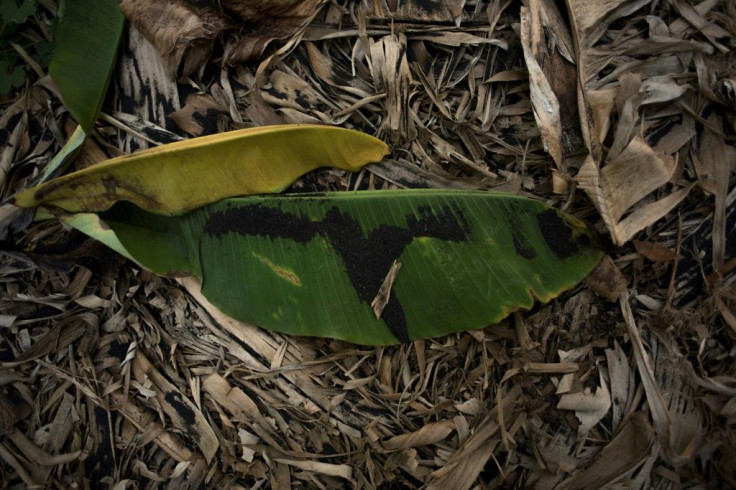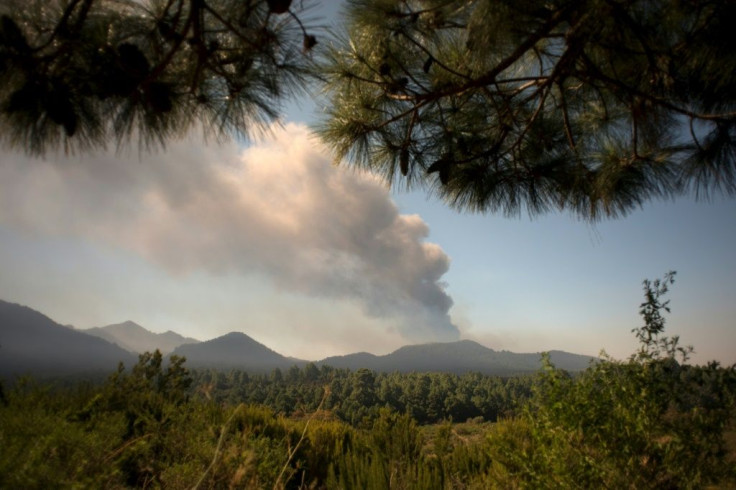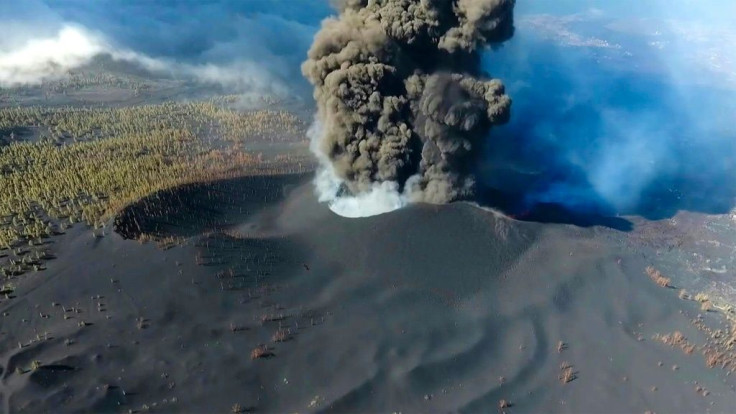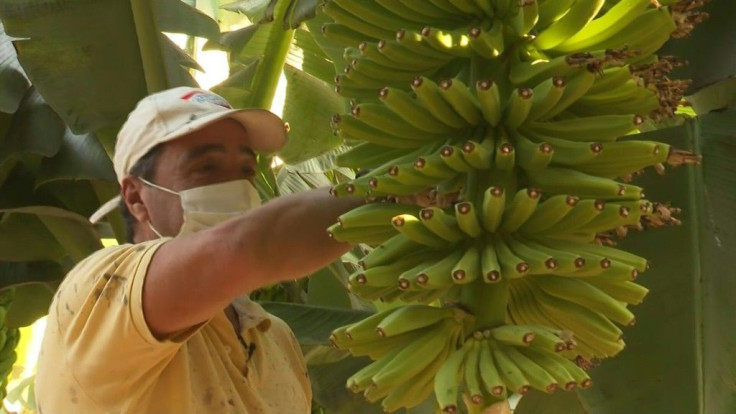Volcanic Grit, Water Shortage Threaten La Palma's Bananas
"It's worse than a plague," curses Pedro Antonio Sanchez, fuming over the volcanic grit coating his bananas, the main source of wealth on the Canaries' island of La Palma.
"It's worse than a pest or disease because it scratches (the fruit)," says Sanchez, gesturing at the black sandy deposits that have rained down from the sky since the volcano erupted on September 19.
The volcano has caused huge damage to banana plantations in La Palma -- the second-largest producer in the Atlantic Canary Islands -- where the crop accounts for 50 percent of the island's economy, industry figures show.

Once the black grit lands on the bananas, it is almost impossible to remove.
And it causes further damage in the handling, transport and packing, with the huge bunches -- which are known as "pineapples" and can weigh up to 70 kilos (150 pounds) -- carried on the shoulders.
"You have to blast it off with water or something, to be honest I don't know how to do it," says this 60-year-old who owns a small plantation.
"When the dew forms overnight, it really makes the grit stick and in the morning it just won't come off," he says, with evident frustration.

The skin blackens in the form of a scratch but nothing like the brownish-black markings, known as bruises, which show the fruit is ripe.
And although the banana is perfect, it is rejected and cannot be sold.
"European quality regulations ban the sale of bananas with more than four square centimetres of scratches per fruit, even if they are perfect inside and can be eaten without risk," says Esther Dominguez of ASPROCAN, which represents banana producers in the Canary Islands.

"It just takes away your desire to work, makes you want to throw in the towel because they are just so ugly," he says, his face darkening as he looks at his damaged fruit.
"We're in a really bad situation."

The volcano's eruption has predominantly hurt the Aridane valley on the western flank of La Palma, although the problem caused by volcanic ash and grit has affected a much wider area.
"It is not just the Aridane valley because the wind changes direction and ash is blown all over so 100 percent of the island is affected," Juan Vicente Rodriguez Leal, head of the Covalle agricultural cooperative told AFP.
"So we are going to have a significant loss of at least one year's crop," he said, estimating losses of "around 120 to 130 million euros ($140 to $150 million)".

The plantations are also suffering from a lack of water after the lava destroyed the area's irrigation pipeline.
Bananas, explains Sanchez, need a lot of water and the current shortage "is the biggest threat".
La Palma has long suffered from water shortages, with no rivers, lakes or reservoirs, with the island getting its water from underground aquifers or clouds whose water is collected by pine trees and transferred to the ground.
Bananas "need a lot of irrigation every seven days. Now we're irrigating every 15 days to save water, and although they're not going to dry out, the fruit feels the impact," he says.
Two water desalination containers were delivered to the area late Tuesday, and a water tanker will be brought in next week.
The harvested bananas are transported to Los Llanos de Aridane where Covalle packs and ships them.
But since the eruption, "there has been a drop of about 50 to 60 percent" in deliveries, Covalle's manager Enrique Rodriguez told AFP, pointing to the number of plantations "swept away by the lava".
Others were struggling with restricted access to plantations close to the lava flow, he said.
In 2020, La Palma produced 148,000 tonnes of bananas, or 34.5 percent of the Canaries' overall crop, ASPROCAN figures show.
In terms of production, it is second only to Tenerife, which is three times larger.
Banana growers stand out for the indelible stains on their clothes, brown patches caused by the milky juice that leaks out when the teardrop-shaped magenta blossoms are cut.
One-tenth of La Palma's 700 square kilometres (270 square miles) is dedicated to agriculture, of which 43 percent is planted in bananas, according to the Biosphere Reserve of La Palma.
More than 80 percent of the banana plantations in the Canaries are modest plots of less than 2.5 acres (one hectare), with many farmers living hand-to-mouth.
"There are months when you bring in 1,000 euros ($1,150) or a bit more but it's normally less" -- sometimes even as little as 300 euros, he says.
"It just doesn't make me feel like working."
© Copyright AFP 2024. All rights reserved.





















